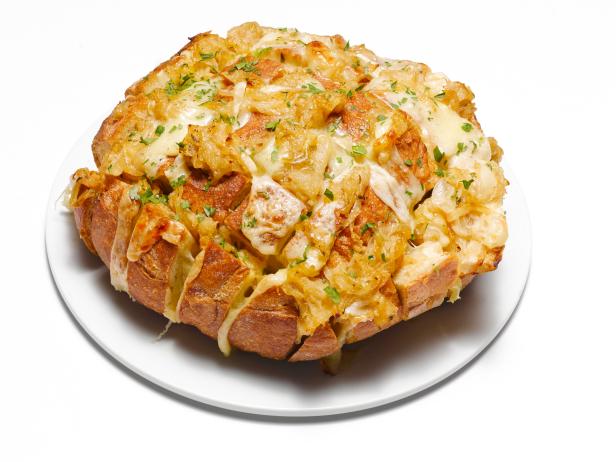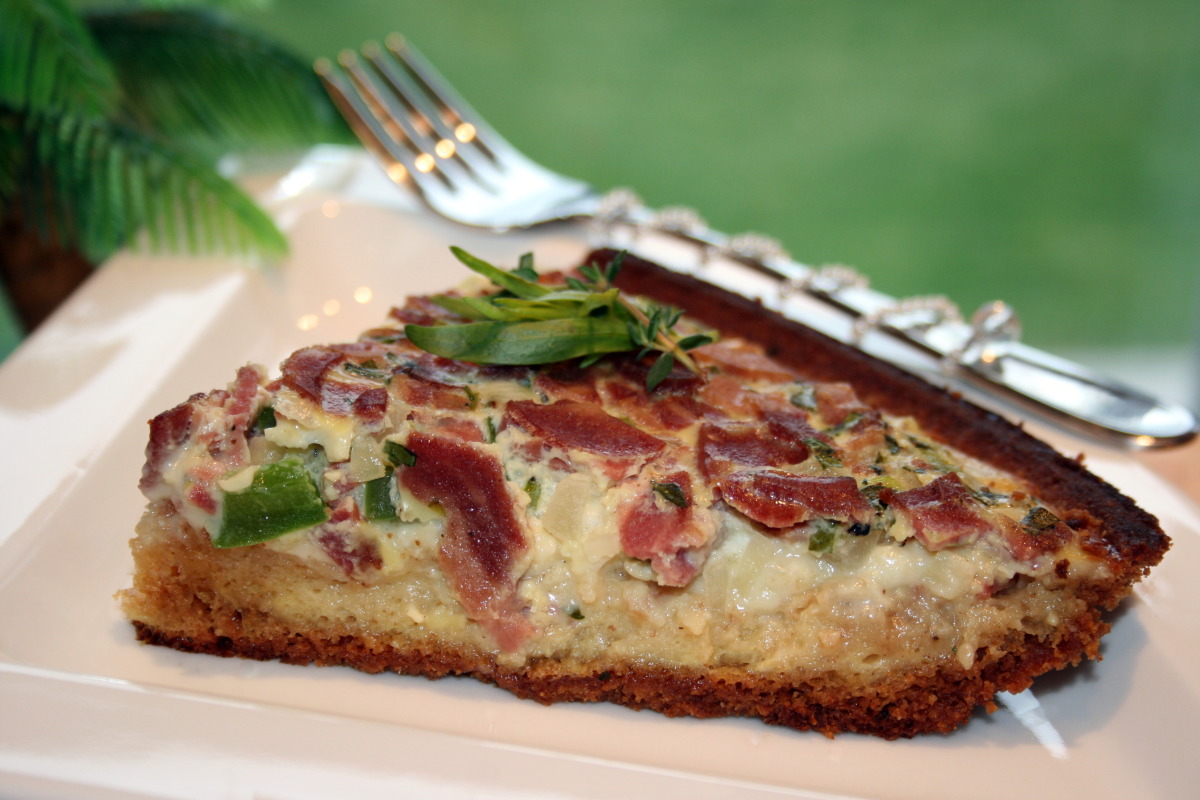**The Miracle Boule: A Culinary Symphony of Breads**
Embark on a culinary adventure with the Miracle Boule, a versatile dough that transforms into an array of delectable breads. From the classic French boule to the rustic Italian focaccia, this versatile dough adapts to your culinary desires. Indulge in the fluffy brioche, perfect for sweet or savory fillings, or savor the hearty whole wheat boule, a wholesome choice for everyday meals. Elevate your bread-making skills with the Miracle Boule, a true testament to the transformative power of a simple dough.
**Recipes Included:**
1. **Classic French Boule:** Master the art of French bread with this timeless recipe, yielding a crisp crust and airy interior that will transport you to the boulangeries of Paris.
2. **Italian Focaccia:** Experience the rustic charm of Italian focaccia, topped with fragrant herbs, succulent tomatoes, and a drizzle of olive oil, capturing the essence of Mediterranean cuisine.
3. **Fluffy Brioche:** Delight in the rich, buttery flavor of brioche, a versatile bread that shines in both sweet and savory dishes. From decadent French toast to savory sandwiches, brioche adds a touch of luxury to any meal.
4. **Hearty Whole Wheat Boule:** Embrace the goodness of whole grains with this wholesome boule, packed with nutrients and bursting with a nutty flavor. Enjoy it toasted with your favorite toppings or savor it as a hearty accompaniment to soups and stews.
THE MIRACLE BOULE

Steps:
- Mix the flour, salt and yeast in a bowl. Stir in 1 1/2 cups/375 ml water to blend. What you'll have is a wet, shaggy, sticky dough, but not so wet as to be batter. Cover the bowl with a tea towel and let it rest in a warm place for at least 12 hours, and up to 24 hours. It's ready for the next step when the surface is dotted with bubbles.
- Flour a work surface and dump the dough out onto it. Sprinkle over a little more flour and fold it once or twice. Cover with the tea towel and let rest 15 minutes.
- Using only enough flour to keep the dough from sticking to your fingers, shape the dough into a ball. Coat a cotton towel with cornmeal, wheat bran or flour and lay the dough on it, seam-side down. Dust with more cornmeal, wheat bran or flour. (You need quite a lot because you want to be sure the dough doesn't stick to the towel). Cover and let rise for about 2 hours. When ready, the dough will be more than double in size.
- Half an hour before the dough is ready, preheat the oven to 450 degrees F/230 degrees C. Put a 2-liter cast-iron pot or Dutch oven (cocotte) inside to heat.
- When the dough is ready, remove the pot from the oven and turn the dough into it, seam-side up. (It will look messy, but this is OK.) Shake the pot to settle the bread evenly. Cover with the lid and bake for 30 minutes. Remove the lid and bake until the loaf is nicely browned, another 15 to 30 minutes. Cool on a rack.
FRESH BAKED BOULES

Provided by Robert Irvine : Food Network
Time 3h20m
Yield 2 boules
Number Of Ingredients 6
Steps:
- Dissolve salt, sugar, and yeast in the warm water and allow the yeast to proof. ("Proofing" the yeast is testing it for viability. It will develop a foam which looks like the head of a beer. If it doesn't proof, the yeast is dead and should be discarded.) Proofing takes about 15 minutes. Place flour in a food processor fitted with a dough blade, and through the feed tube with the food processor running, slowly pour the proofed yeast mixture, until the dough comes together and is a cohesive mass. Transfer the dough to a floured board, and knead for about 5 minutes. Place in a bowl, cover with a clean dish towel and allow dough to rise, so that it roughly doubles in volume. (This will take about 30 minutes to 1 hour). The dough has risen enough if you make an indentation with your finger and it does not spring back.) Punch the dough down and allow it to rise again. (Allowing the dough to rise a second time gives it a finer texture.) Note: It will not rise as much the second time.
- Preheat oven to 400 degrees F.
- Divide the dough in half, and transfer half to a floured board and keeping the balance covered with the towel. Shape the dough into a circle by pulling from the side and pushing the dough under and up from the bottom to form a dome, rotating to make it circular. Cover with a piece of oiled plastic wrap and let rest 10 minutes. Repeat for each section of dough. Grease a round cake pan for each loaf and transfer dough to the pans. (This shape will keep the dough from flattening out while it bakes.) Brush with melted butter and bake until the crust is golden brown and crispy. When done, the bread should sound hollow when tapped, approximately 30 to 35 minutes. Remove from oven and let rest 10 minutes in pan. Remove from pan and serve warm or room temperature with butter.
SOUPER BOULE

Provided by Food Network
Categories appetizer
Time 1h5m
Yield 6 to 8 servings
Number Of Ingredients 10
Steps:
- Preheat the oven to 350 degrees F. Combine the broth and nutmeg in a small saucepan and bring to a simmer. Remove from the heat and stir in the horseradish and 1/2 tablespoon butter.
- Melt the remaining 4 tablespoons butter in a large skillet over medium heat. Add the onions, thyme and 3/4 teaspoon salt and cook, stirring often, until the onions are golden brown and soft, about 20 minutes. Let cool slightly, then stir into the broth mixture.
- Slice the bread at 1 1/2-inch intervals with a large serrated knife, stopping about three-quarters of the way to the bottom. Repeat, making perpendicular cuts, to create a crosshatch pattern in the top of the loaf.
- Set the loaf on a parchment-lined rimmed baking sheet. Stuff the gruyere and onions into the slits, breaking the cheese into smaller pieces, if necessary. Pour any remaining broth mixture into the slits. Cover the bread loosely with foil and bake until warm, about 15 minutes. Remove the foil and continue baking until the cheese melts and the bread is toasted, 20 to 25 more minutes. Sprinkle with parsley.
SOURDOUGH BOULE

Provided by Food Network Kitchen
Categories side-dish
Time 8h
Yield One large boule
Number Of Ingredients 4
Steps:
- Mix the flour and 1 1/2 cups of the water in a large bowl until a shaggy dough forms. Cover the bowl with a lid or plate and let stand until the flour absorbs the water, 30 to 45 minutes.
- Add the sourdough starter, salt and remaining 3 tablespoons water to the dough. Squeeze and twist with your hands until a sticky dough forms (it will be soupy at first, but continue mixing). Knead the dough in the bowl by scooping under the dough, stretching it up and twisting it while you rotate the bowl a quarter turn; slap down the dough and repeat. Continue kneading until the dough smooths out and pulls away from the bowl, 5 to 7 minutes. Scrape down the sides of the bowl and cover with a lid. Let rest in a warm place, 30 minutes.
- Uncover the dough. Gently reach under the dough with a wet hand, stretch it up as far as it will go without tearing, then fold the dough over itself. Rotate the bowl a quarter turn and repeat three times; this is a set of turns. Do another set of turns, then re-cover the bowl and return to a warm place to rest, 30 minutes.
- Do two sets of turns every 30 minutes until the dough has increased in size by one-third and has large bubbles in spots, 2 1/2 to 3 1/2 more hours, covering the bowl after each time. After the last set of turns, cover the bowl and let the dough rest another 30 minutes.
- Turn out the dough onto a generously floured work surface. Slide a bench scraper or large spatula underneath and fold the dough in half. Cup floured hands around the dough and gently roll it in a circular motion into a taut ball. Let rest, uncovered, 20 minutes (the dough will flatten a little).
- Line a medium bowl with a clean lint-free towel and dust generously with flour. Lightly dust the top of the dough with flour, then slide a bench scraper or large spatula underneath and flip it over. Working gently to not deflate the dough, pull each of the four "sides" of the dough up and into the center, folding the last side to cover the whole top of the dough. Roll the dough over so the seams are on the bottom. Slide a bench scraper or large spatula underneath and gently invert the dough into the towel-lined bowl with the seam up. Cover loosely with the overhanging towel. Let rest in the refrigerator, at least 8 hours and up to 18 hours.
- About 30 minutes before baking, place a 10- to 11-inch Dutch oven with a lid in the middle of the oven and place a baking stone or large cast-iron skillet on the bottom rack to absorb the heat; preheat to 450˚ F. Carefully remove the Dutch oven from the oven and uncover. Remove the dough from the refrigerator, uncover and lay a large round of parchment on top. Invert the dough onto the parchment. Carefully lower the dough (on the parchment) into the hot Dutch oven. Using kitchen shears or a sharp knife, make a few 1/4- to 1/2-inch-deep cuts in the top so that the dough can expand.
- Transfer the pot to the oven; cover with the lid. Bake until the bread has risen and the crust is pale, about 20 minutes. Uncover and bake until the crust is browned and crisp and a thermometer inserted into the center registers 210˚ F, 25 to 35 minutes. Let cool 10 minutes in the pot, then transfer to a rack to cool completely, about 2 hours.
Tips:
- When choosing your ingredients, opt for high-quality, organic options whenever possible. This will ensure that your boule is as nutritious and flavorful as possible.
- Make sure your sourdough starter is active and bubbly before using it. This will help ensure that your boule rises properly.
- Be patient with the process. Sourdough bread takes time to rise and bake, but the results are worth the wait.
- Don't be afraid to experiment with different flours and flavors. You can add nuts, seeds, dried fruits, or herbs to your boule to create a unique and delicious loaf.
Conclusion:
The Miracle Boule is a delicious and nutritious bread that is perfect for any occasion. Whether you're enjoying it for breakfast, lunch, or dinner, this bread is sure to please everyone at the table. With its simple ingredients and easy-to-follow instructions, this recipe is a great option for bakers of all skill levels. So next time you're looking for a delicious and healthy bread to bake, give the Miracle Boule a try.
Are you curently on diet or you just want to control your food's nutritions, ingredients? We will help you find recipes by cooking method, nutrition, ingredients...
Check it out »
You'll also love








